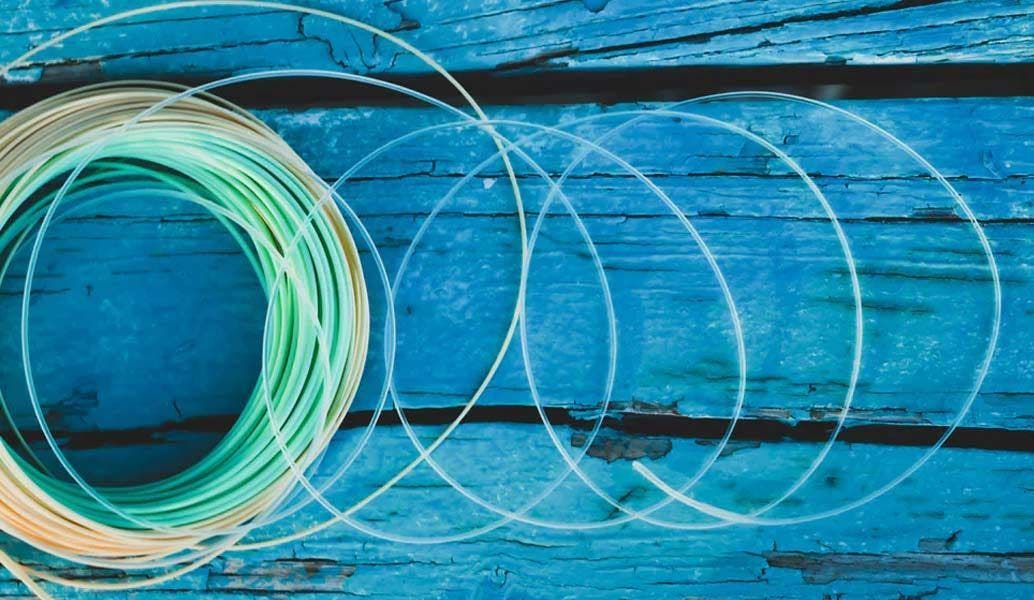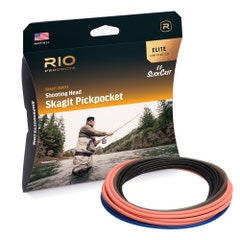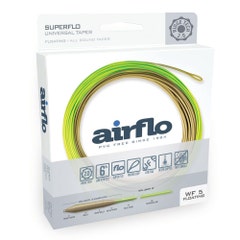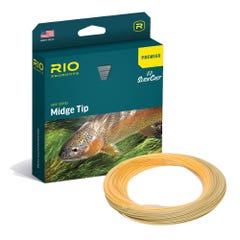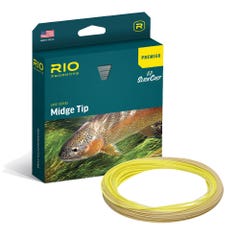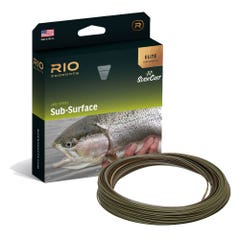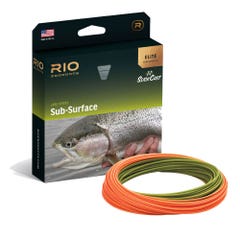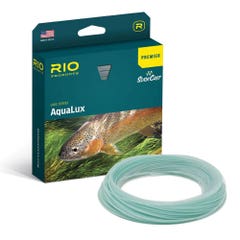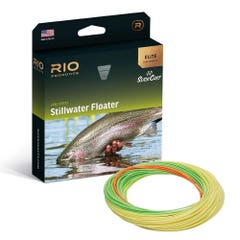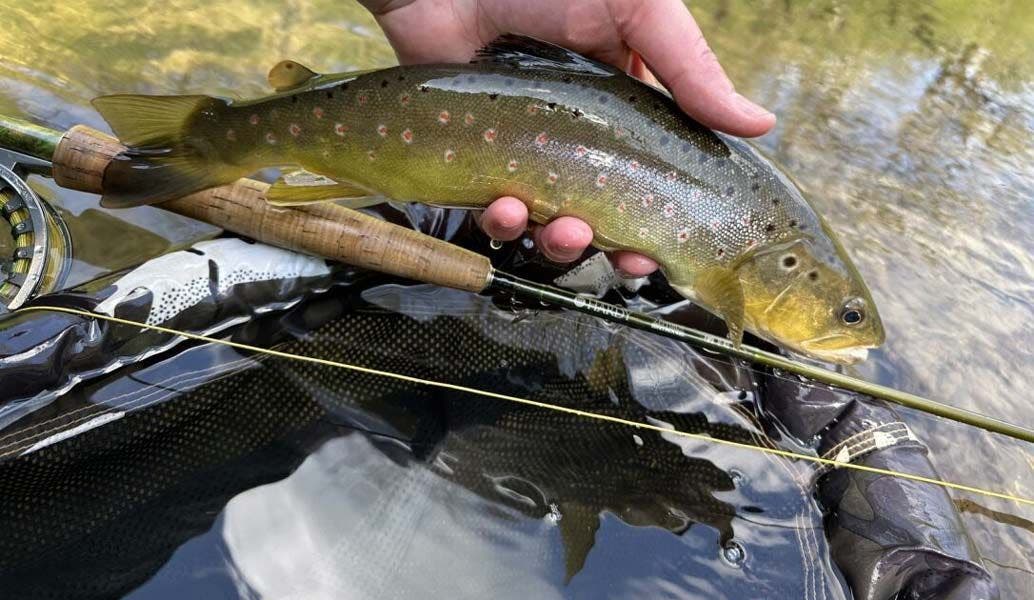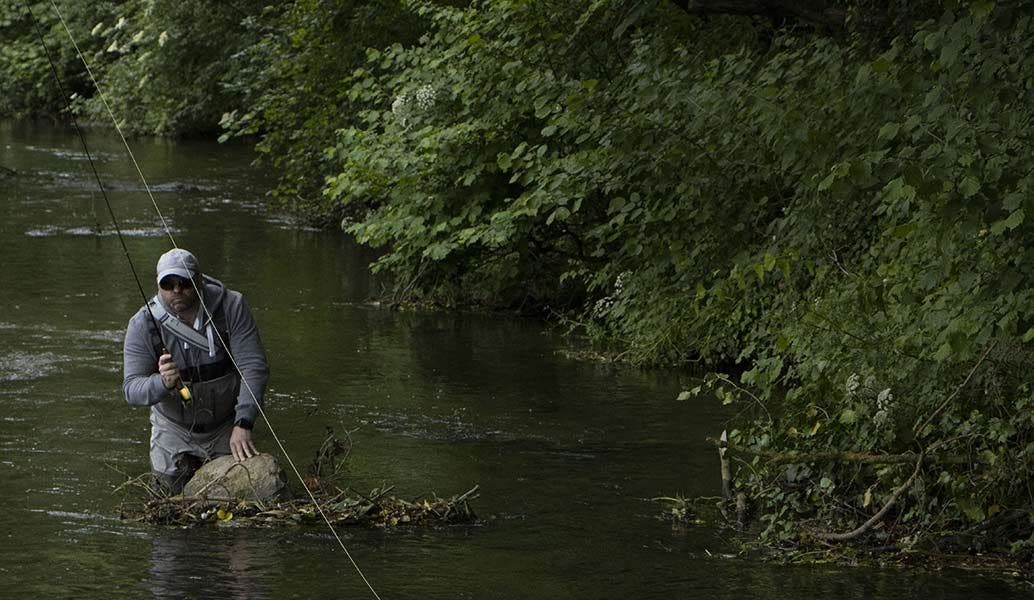Choosing the correct fly line to balance your fly rod and to best serve the intended purpose of the line is critical to fly fishing success.
Choosing a Single-Handed Fly Line
Your rod and line must work together to make casting and fishing a pleasure and the wrong choice of line can make even the fly line can make even the best fly rod cumbersome and uncooperative.
Fly Line Construction and Jargon Explained
Fly lines have two components: the inner core and the outer coating.
The Core
Every fly line has a core that runs through the centre of the line. The core provides the strength of the line and is a major factor in how stiff (or supple) the line is. The core also controls how much stretch there is in a line, with low stretch cores providing greater feel and control in casting and fishing techniques, and more stretchy cores providing greater shock absorption with super light tippets.
Fly lines that are designed for tropical conditions are made with a stiffer core, as high temperatures will result in a standard fly line becoming very limp and soft, and not shooting well. If used in cool/normal UK conditions these lines are usually stiff and wiry and need to be stretched before they can be used.
The Coating
The core of a line is surrounded by a plastic coating (usually PVC) that is bonded to the core. The coating influences the line’s shape, weight and density.
Fly Line Shape
Line manufacturers vary the shape of a fly line to make it perform in different ways. These ‘shape’ changes determine the line’s casting behaviour. For example, a line with a long front taper and a light front end lands softly on the water and is great for presentation but would be useless with a heavy fly or in a tough wind. A line with a lot of weight at the front end, and a short front taper, would be far better suited for such challenging conditions, but would have poor presentation.
Within the fly line world, there are two generally used line shapes: a ‘weight forward’ and a ‘double taper’. As the name suggests, weight forward lines have most of the weight at the front end, and a very thin ‘running line’ behind this weight. The thin running line has less friction and drag than the head, which makes it easy to shoot line and get distance. A much lesser used line shape these days is the ‘double taper’, which is a fat line for most its length but with a taper to a thin tip at each end.


Fly Line Weight
Fly lines are generally made to an industry standard weight called the AFTM standard. It is a number given to both line and rod (usually between 1 and 12) that ensures matching numbered fly lines and fly rods balance and load perfectly. For example, put a 6wt line on a 6wt rod and a 2wt line on a 2wt rod, and so on. The standard is based on the weight of the first 30 feet of line.
Fly Line Density
The density of the coating determines whether the line floats or sinks. Floating lines have tiny ‘microspheres’ to make them float, while sinking lines have tungsten added to the coating to make them sink. Lines can sink at any speed between 1 and 8 inches per second.
A fly line is usually designated by a code on the front of the box, something like ‘WF6F’. Usually, the first two letters of this code tell you the shape (profile) of the line, the number tells you the size (weight) of the line, and the last letter tells you if it floats or sinks. In this example ‘WF’ means it is a ‘weight forward’ line, ‘6’ means it is for a 6wt rod, and ‘F’ means that it floats. If it had an ‘S’ at the end, it would mean that the line would sink, and a number after the S tells you how fast it sinks. For example, a ‘WF7S6’ is a weight forward, 7wt sinking line that sinks at 6 inches per second.
Anatomy of a Typical ‘Weight Forward’ Fly Line


Tip – This section attaches to the leader and may feature a loop for this purpose. It is short, usually 6-12”.
Front taper – This section, typically 4’-12’, increases in diameter as you move away from the tip. The longer and gentler the taper, the more delicately the fly will land. Such lines may perform poorly with large flies and when casting into the wind
Body – This thicker section is where most of the casting weight is and is the part that loads a fly rod for a cast.
Rear taper – Here the line reduces in diameter and can vary in length from 1’ to as much as 12’ - depending on what the line is designed to do.
Head – The ‘head’ of a fly line incorporates the tip, front taper, the body and the rear taper and it is usually the weight of this head that gives the line its size.
Running line – This last, level section is thin in diameter and light in weight, which means there is little drag when making the final cast, and helps anglers make long casts. This level section attaches to the backing on the fly reel.
I hope that's helped you!
Tight lines,
Simon.

